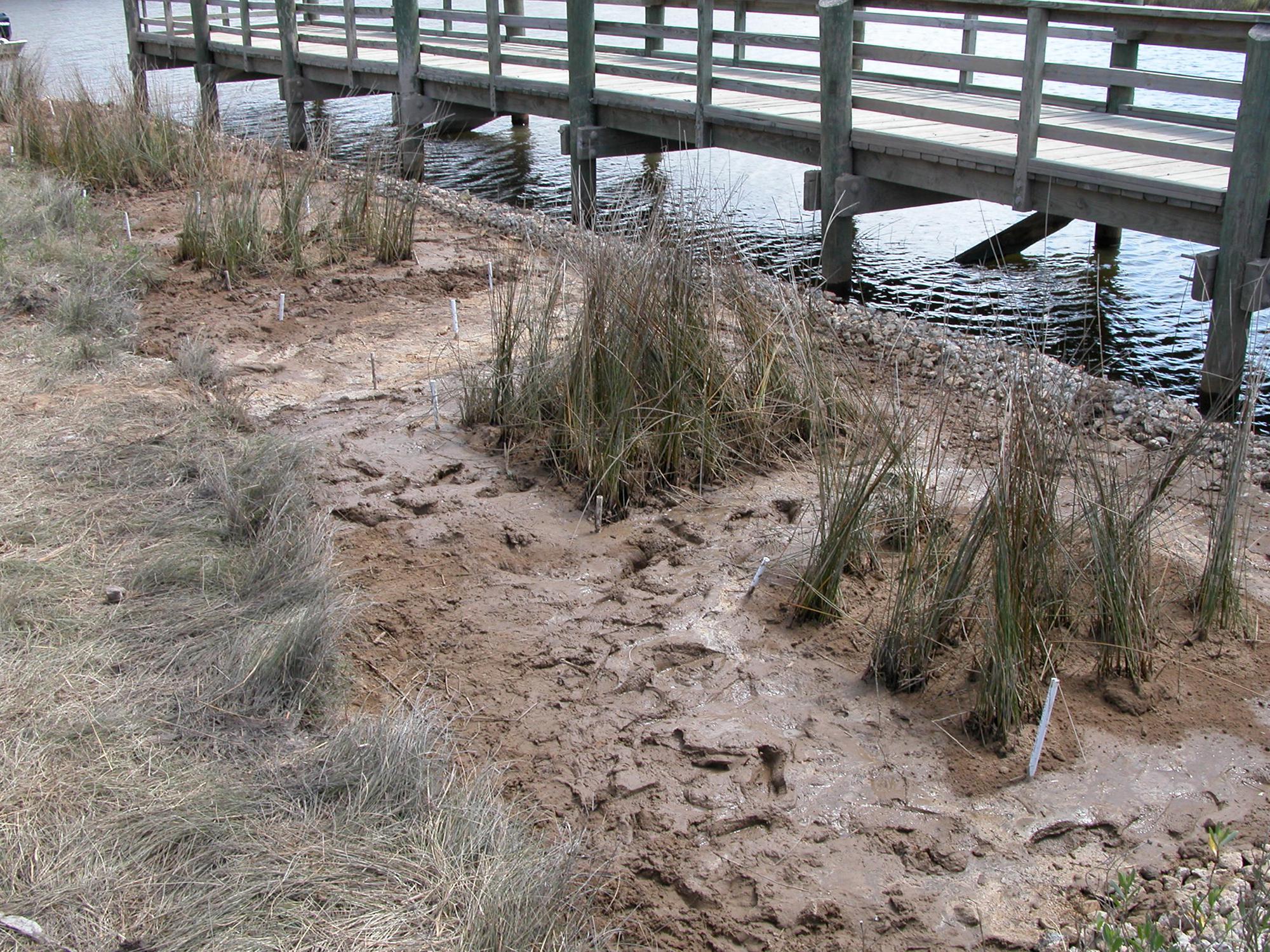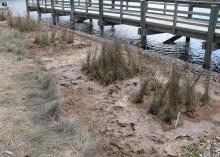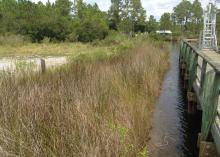Information Possibly Outdated
The information presented on this page was originally released on March 4, 2016. It may not be outdated, but please search our site for more current information. If you plan to quote or reference this information in a publication, please check with the Extension specialist or author before proceeding.
Research helps landowners reduce erosion, support ecosystem
BILOXI, Miss. -- Gulf Coast landowners who restore natural shorelines on their property can help reduce erosion, support healthy coastal ecosystems and boost local economies.
Scientists from Mississippi State University, the University of South Alabama, Dauphin Island Sea Lab, the University of Connecticut, The Nature Conservancy and the Grand Bay National Estuarine Research Reserve teamed up to find the most economical and effective method of salt marsh restoration for small-scale projects.
“Some information exists to guide restoration projects on large areas of land,” said Eric Sparks, an assistant Extension professor at MSU and a coastal ecology specialist with the Mississippi-Alabama Sea Grant Consortium. “But many of those large tracts of property belong to government entities and the projects are too large and too costly to suitably apply the same restoration techniques to smaller, privately owned tracts of property, which make up the majority of our shoreline.”
Salt marshes are an integral part of coastal ecosystems and provide valuable benefits to wildlife and humans. Found in estuaries, where rivers meet the ocean, these wetlands stabilize the shoreline, filter nutrient pollution and offer food and shelter for birds and fish. But they are rapidly disappearing as people build hard structures, such as seawalls and bulkheads to help lessen erosion, Sparks said.
“Human development in these wetlands all over the world is causing large losses of marshland, but the most dramatic losses in the United States are happening in the northern Gulf of Mexico, which includes Mississippi, Texas, Louisiana, Alabama, and Florida,” Sparks said. “We hope that this research provides landowners with information on the ecological and economic benefits of renaturalizing shorelines.”
In the study, the group planted black needlerush in two different designs at the Grand Bay National Estuarine Research Reserve in Moss Point, Mississippi. They harvested the marsh plants from a nearby marsh and used this donor area as a control site for comparison. Transplants were planted in one design area at 100 percent coverage. The second design area was planted at 50 percent coverage, which was less costly and labor-intensive. After two years, both design areas performed similarly.
“The area we planted at 50 percent coverage gave the most bang for the buck,” Sparks said. “It performed just as well as the area we planted at 100 percent.”
Black needlerush is one of the dominant species of grass-like perennial foliage native to the Gulf and Atlantic coasts. It grows moderately fast, forming a deep, fibrous root system and dense above-ground canopy that provides habitat for waterfowl, muskrats, nongame birds, and organisms that are the base of the food chain for fish, shrimp, crabs and other commercially important seafood.
In addition to determining the number of transplants necessary for good vegetative coverage, the study established two other important factors for salt marsh restoration. It found that proper slope and the type of sediment also dictate successful restoration.
Just Cebrian, senior marine scientist at the Dauphin Island Sea Lab in Alabama and one of the project researchers, said landowners must prepare sites correctly so that the restored marsh resists erosion, supports vegetation growth and filters groundwater pollution correctly.
“Salt marshes act like kidneys between the land and the estuary, filtering out pollutants captured by runoff,” said Cebrian, who also is a professor of marine sciences with the University of South Alabama. “But if the constructed marsh is not built right, it will not do its job the way it should.”
Measurements collected during the study showed that both design areas filtered out 90 percent of the pollutants that entered the marsh.
“That is only 5 feet of marsh that we are talking about, which is a reasonable amount of area for private landowners to restore,” Cebrian said. “That is like a home improvement project, and can be very affordable.”
Cost effectiveness depends on how much site preparation must be done before planting, whether seed or sod will be used to vegetate the site, and how much labor will be needed to prepare and plant the site. The study outlines different cost scenarios, including donation of all labor and materials, purchase of all labor and materials, and different combinations of donated and purchased labor and materials.
“Most all sites are going to need some sediment added, and site preparation will be the most expensive portion of restoration if that labor is not donated or done by the landowner,” Cebrian said. “But the cost of doing nothing is much higher. Pollution from runoff, especially in developed watershed areas with lots of pavement, can cause a lack of oxygen that kills fish. The water also becomes very dirty and develops an unpleasant odor.”
Natural shorelines are much better at providing a long-term solution for lessening coastal erosion. Sea walls and other hard structures deteriorate from exposure to saltwater, and many must be replaced every 10 to 30 years.
“Natural shorelines do their job forever, keeping coastal ecosystems healthy for generations to come,” Cebrian said.
The study was funded by the Mississippi-Alabama Sea Grant Consortium and published in the journals “Ecological Engineering” and “Journal of Environmental Management.”
Established in 1999, the Grand Bay National Estuarine Research Reserve is located in Jackson County. It is managed by the Mississippi Department of Marine Resources as part of the National Oceanic and Atmospheric Administration’s National Estuarine Research Reserve System.
Major partners of the reserve include the Mississippi Department of Marine Resources, Mississippi Secretary of State’s Office, Mississippi State University, The Nature Conservancy, United States Fish and Wildlife Service, and the University of Southern Mississippi.
For more information about the Grand Bay National Estuarine Research Reserve, visit http://grandbaynerr.org/.





